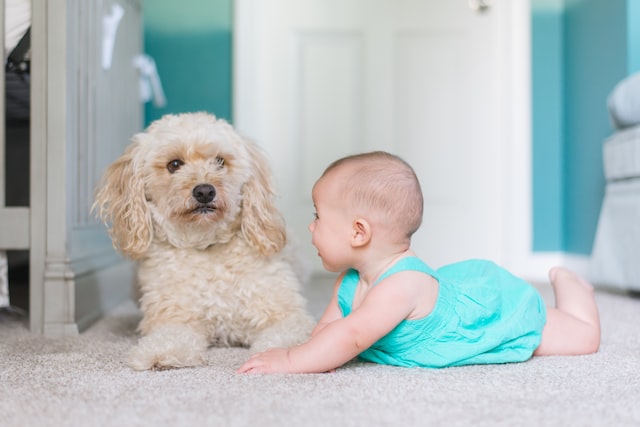Introducing a new puppy into your home is always exciting, but it can also be a little bit scary too. Especially if you have young children in the house. Puppies are cute, cuddly, and playful – but they can also be a lot of work. It’s important to make sure that both the puppy and the kids get off to a good start, and that means following some simple tips. In this article, we will discuss eight ways to introduce puppies to young children safely and effectively.

Start with a short meeting
When you first bring the puppy home, have a short meeting with all of the family members who will be interacting with him or her. This is a good time to talk about some basic rules, such as not pulling on the puppy’s tail or ears. It’s also a good opportunity for the kids to ask any questions they might have.
Make the first meeting in a neutral setting
If possible, try to introduce the puppy to the children in a neutral place like a park or another person’s house. This will help the puppy feel more comfortable and less overwhelmed.
Let the puppy adjust
It’s important to give the puppy some time to adjust to his or her new surroundings before introducing him or her to the kids. Let the puppy explore, get comfortable with their new home, and get used to all of the new sights and sounds.
Supervise, supervise, supervise
It’s important to always supervise when the puppy and the kids are together. This will help prevent any accidents from happening, and it will also give you a chance to intervene if things start to get too rough. For example, small dogs such as Maltese puppies – have a high chance of getting hurt when left unsupervised. Remember that most children can’t regulate their force, so they might pull or pull too hard.
Let your children help with feeding time, walking, and other caretaking activities
This will help them feel like they are a part of taking care of the new puppy and will make them more likely to be gentle and patient with him or her.
Be patient
Puppies have a lot of energy, and they often want to play all the time. But young children can get tired quickly. It’s important to be patient and let the puppy and the kids interact at their own pace.
Teach your children basic commands
Teach your kids some of the most basic commands for dogs, including “sit,” “down,” and “stay.” This will help them interact with the puppy in a positive way and will also give them a sense of responsibility.
End on a positive note
When it’s time to end the puppy-kid play session, make sure to do it on a positive note. This will help the puppy and the kids associate positive feelings with each other, and it will make them more likely to want to play together again in the future.
3 Warning Signs to Look Out for When Introducing Your Puppy
After you learn about the best ways to introduce your pup, it’s now time to discuss some of the warning signs that you need to look out for while introducing your new puppy to your young children. By being proactive and watching for these signs, you can help ensure that everyone in your family stays safe and enjoys having the new puppy around!
Signs of Fear and Anxiety
One warning sign to look out for is if the puppy seems overly fearful or anxious around children. If the puppy is cowering in the corner, trying to avoid contact with kids, or appears to be shaking with fear, this is a red flag that something may not be right. It’s important to give the puppy some time to adjust to its new surroundings, but if the fearfulness persists, it’s best to consult with a veterinarian or animal behaviorist to see if there is something more that can be done.
Symptoms of Aggression
Another sign that you should be aware of is if the puppy becomes aggressive when around children. This can manifest in growling, snapping, or even biting. It’s important to nip this behavior in the bud right away, as it can be difficult to change once it becomes established. If you see any aggression from the puppy, separate them from the child immediately and consult with a professional to see what steps need to be taken next.
Frequent Urinating and Defecating
If you notice that your puppy is frequently urinating or defecating in the house, this is also a cause for concern. While it’s normal for puppies to have accidents occasionally, if this becomes a frequent occurrence it could be a sign of stress or anxiety. If you’re seeing more accidents than usual, take your puppy to the vet to rule out any medical causes and then work on implementing some behavior modification techniques to help them feel more comfortable in their new home.

